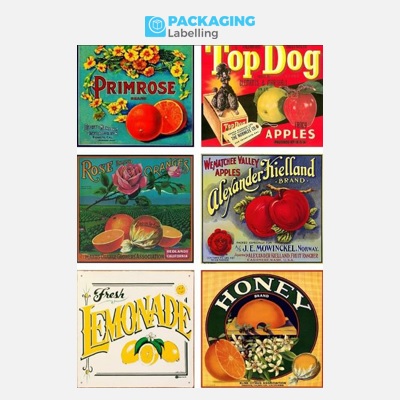Navigating Regulations: Best Practices for Labels and Tags in Packaging

In the modern landscape of packaging, regulatory compliance is crucial for ensuring consumer protection and maintaining industry integrity. Companies must navigate a complex regulatory framework that governs product labeling and packaging standards to meet labeling requirements and adhere to environmental regulations. This article delves into best practices for labels and tags in packaging, emphasizing the importance of compliance auditing and adherence to industry best practices.
Understanding the Regulatory Framework
A comprehensive understanding of the regulatory framework is essential for effective product labeling. This framework encompasses various laws and regulations designed to ensure consumer protection and environmental sustainability. Labeling requirements vary significantly across different regions and industries, necessitating a thorough review of applicable packaging standards.
For instance, in the food industry, food packaging labels must include detailed information such as ingredients, nutritional facts, and allergen warnings. These safety labels are critical for consumer protection, ensuring that consumers are well-informed about the products they purchase. Similarly, environmental regulations mandate the use of eco-friendly materials and clear disposal instructions to minimize environmental impact.
Labeling Requirements and Consumer Protection
Meeting labeling requirements is a fundamental aspect of regulatory compliance. These requirements are designed to protect consumers by providing essential information about the product. Product labeling must be accurate, clear, and compliant with the regulatory framework to avoid misleading consumers.
Food packaging labels are a prime example of how labeling requirements contribute to consumer protection. These labels provide vital information such as expiration dates, storage instructions, and nutritional content. Compliance with packaging standards ensures that this information is presented in a consistent and accessible manner, helping consumers make informed decisions.
| Also Read: The Importance of Clear and Informative Labeling for Consumer Protection |
Compliance Auditing and Industry Best Practices
Regular compliance auditing is a key practice for maintaining regulatory compliance. Audits help identify gaps in product labeling and ensure adherence to labeling requirements. By conducting thorough compliance auditing, companies can proactively address any issues and avoid regulatory penalties.
Adopting industry best practices is another critical step towards effective product labeling. These practices include staying updated with the latest regulatory framework, investing in high-quality printing technologies, and implementing robust quality control measures. Industry best practices also involve training employees on regulatory compliance and labeling requirements to ensure consistency and accuracy.
Packaging Standards and Environmental Regulations
Adherence to packaging standards is essential for ensuring the safety and effectiveness of product packaging. These standards encompass a wide range of criteria, including material selection, design specifications, and safety labels. Compliance with packaging standards not only ensures regulatory adherence but also enhances the overall quality and durability of the packaging.
Environmental regulations play a significant role in shaping packaging standards. These regulations aim to reduce the environmental impact of packaging materials and promote sustainable practices. Companies must ensure that their packaging complies with environmental regulations by using recyclable or biodegradable materials and clearly labeling disposal instructions. This not only supports environmental sustainability but also enhances brand reputation and consumer trust.
Best Practices for Labels and Tags in Packaging
To navigate the complex landscape of regulatory compliance effectively, companies should adopt the following best practices for labels and tags in packaging:
1. Stay Informed: Regularly review and update your knowledge of the relevant regulatory framework and labeling requirements. This includes staying abreast of changes in environmental regulations and packaging standards.
2. Invest in Technology: Utilize advanced printing technologies to ensure high-quality and accurate product labeling. This includes investing in durable materials that comply with labeling requirements and environmental regulations.
3. Conduct Regular Audits: Implement a robust compliance auditing process to identify and address any gaps in regulatory compliance. Regular audits help ensure that your product labeling meets all labeling requirements and packaging standards.
4. Train Employees: Provide comprehensive training for employees on industry best practices, regulatory compliance, and labeling requirements. This ensures that all team members are knowledgeable and capable of maintaining consistent and accurate product labeling.
5. Engage with Regulators: Maintain open communication with regulatory bodies to stay updated on the latest regulatory framework and environmental regulations. Engaging with regulators can provide valuable insights and help ensure that your product labeling practices are compliant.
Conclusion:
Navigating the regulations for labels and tags in packaging requires a deep understanding of the regulatory framework, adherence to labeling requirements, and a commitment to industry best practices. By prioritizing consumer protection, conducting thorough compliance auditing, and complying with packaging standards and environmental regulations, companies can ensure effective and compliant product labeling. Implementing these best practices not only enhances regulatory adherence but also fosters consumer trust and brand reputation in the competitive marketplace.









